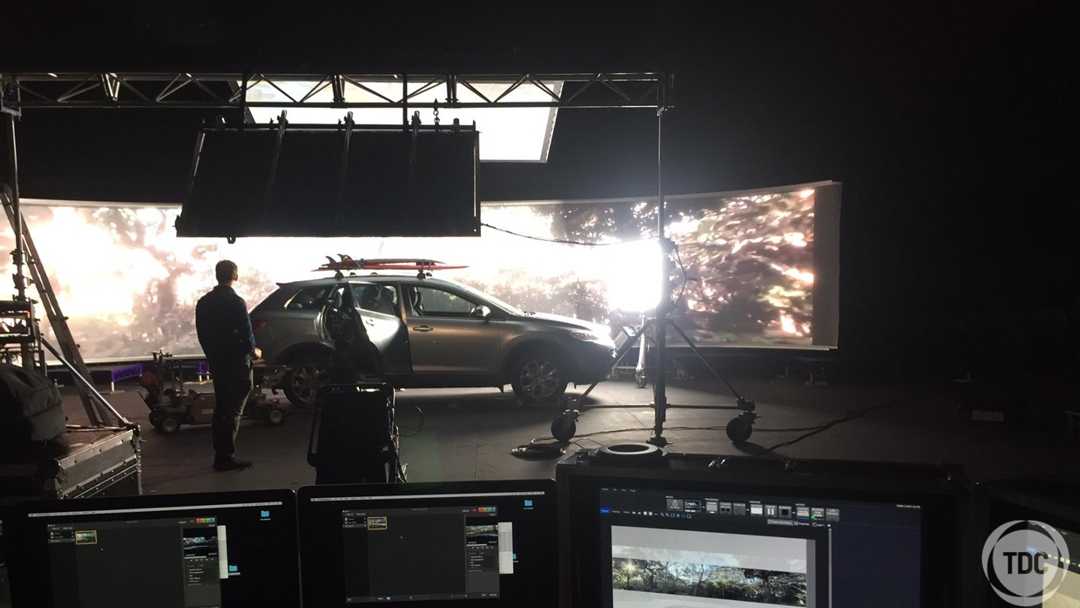Brompton helps deliver virtual ad production
- Details

TDC knew that to be able to fully deliver the vision of award-winning director Marc Forster they had to use equipment offering superior performance and reliability, so chose the combination of Brompton Technology’s Tessera LED processors driving ROE Visual LED panels.
The commercial, which focused on road safety during the holidays, followed an eight-year-old girl and her magical CGI toy bunny working together to save her dad from distracted driving. The team’s main challenge was to convincingly portray the fast movement of the car, which is generally a difficult environment to film, whilst telling an emotional story that relied heavily on close-up shots.
“Knowing how much Forster disliked the fake screen look, we wanted to give as much realism as possible to the production by bringing a cutting-edge LED screen technique for moving picture purposes,” explains Alex Rendell, technical project manager at TDC. “In that way, instead of actors having to imagine the surroundings, they could actually be in them.”
The TDC team collaborated closely with the DP Ginny Loane to build what became Australia’s first 180-degree LED cyclorama, featuring ROE Carbon 3 3.75mm LED panels. The LED wall served both as the moving backdrop and the main lighting source for the car interior and actors, removing the need for extensive on-location shooting and offering realistic ambient lighting effects and controlled, accurate reflections everywhere – even in the actors’ eyes.
“Having the footage shot at the chosen time and location ensured that the same scene could easily be re-created over and over again, with moving reflections and light outside the car windows perfectly in sync with the action inside of the car,” continues Rendell. “Additionally, having the video content displayed on an LED screen created a realistic environment for the talent to act in and interact with, resulting in authentic performances.”
Brompton’s Tessera SX40 4K LED processor ensured the LED screen looked flawless and the pre-filmed content was perfectly translated onto it, with accurate scaling and colour.
“The main thing that the Brompton processor helped with during the project was the ease of positioning and scaling of both screens within the 4K camera footage,” adds Rendell. “This enabled full flexibility of the car orientation relative to the screen and camera angles during the shoot.”
Another feature of the Tessera SX40 processor that TDC found particularly useful for this project was ChromaTune. “We made use of the ChromaTune feature in the Tessera software to be able to manipulate colour adjustments on set for the best results on camera. To have all these kinds of features on board with the SX40 proves that virtual productions can be made on a smaller scale,” says Fiddler.
















